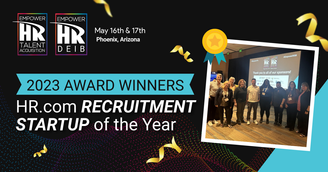Here is the matrix we will be using, with a little product development approach:
- Interviewing 1.0: Largely scribbled recruiter notes.
- Interviewing 2.0: Largely pre-recorded options and one-way tools.
- Interviewing 3.0: Real conversations and real-time interview data
Let’s walk through this quickly.
Interviewing 1.0
This is only logical. For a long time, there was no technology stack to do anything in recruiting but pick up a phone, smile, dial, and talk to a candidate while taking notes about their career to date. Honestly, when at-scale technology entered recruiting, it created a lot of good, but also a lot of chaos, because we were used to the Interviews 1.0 model for so long. As more and more options for recruiters have become available, though, especially in the audio realm, recruiter notes need to be put out to pasture. No one should be eating a burrito, taking notes, and trying to learn about Dan the product marketing manager all at once. That’s chaos.
Interviewing 2.0
This had a run from 2015 to 2019, give or take, and some companies are still embracing this approach. This came about from a combined focus on cost, efficiency, and hiring manager time. The idea was “one-way tools,” where candidates screen themselves and record answers to pre-recorded questions. In this arena you have chatbots (which aren’t “pre-recorded questions,” but are essentially one-way communication because the chatbot can only achieve so much). Then you have 15 year old video interview technology, like HireVue, WePow and dozens more.
This approach can work for high-volume, lower-skill, and entry-level roles — oftentimes that’s the same value proposition as job boards. But very few true professionals are going to talk to a bot or make a video on their phone to pre-asked questions. One-way tools can also make it easy for recruiters to click a button, give hope to candidates who spend another hour on their application, to never hear back. That’s not how professionals want to be recruited or gain context about an organization.
Interviewing 3.0
Now we come to the promise of the modern moment: real-time conversations, with real-time data, creating a type of “recruiter intelligence” where recruiters bring real value back into the process by contextualizing different candidates and getting to know them through true, honest conversations.
For this to work for an organization, there are some core principles that need to be followed:
- Automate only top of funnel: This is one of the biggest things that organizations get wrong with recruiting. They either don’t automate (people drown in tasks), or they attempt to automate through the entire funnel. That doesn’t work either, or it works if the end goal is less and less human recruiters. You should automate top of funnel, task work, scheduling and re-scheduling items. The rest should be human conversation.
- You need a way to capture interviews in the cloud: This means recruiters don’t have to scribble down notes and can focus on the conversation and the context. Recruiters who “own” their convos are better recruiters and bring more into your organization. We capture interviews in the cloud and allow you to sort by response, etc.
- You need to train up recruiters on what a good conversation sounds like: The recordings help recruiters get trained. They need to know questions, cadence, question flow, follow-ups, technical deep dives, etc. It’s hard, and it takes time, but it can be done, especially if you have recordings of people who already do it well.
If you have those three elements present, you can do Interviews 3.0 and start seeing more value-add hires come in. And honestly, not to be political, but at every level of the wage spectrum, people do want to work. One of the issues with not working has always been flawed processes, and that usually starts right with recruiting. Do some of the above, make interviews a better process for the people that need to be on them, and you will get what you need.



